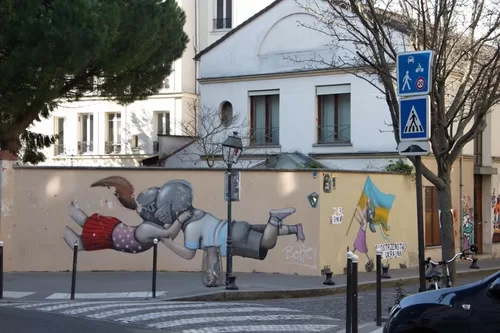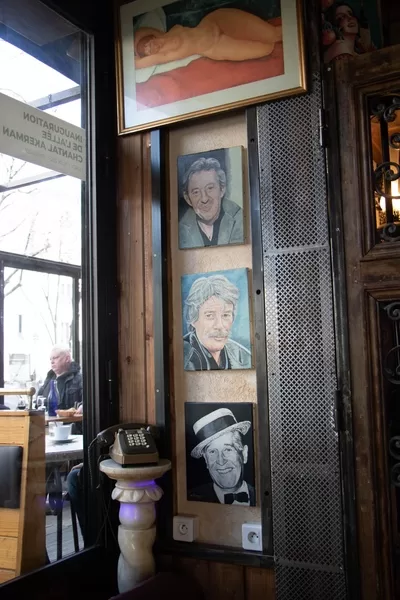This street photographer’s guide to the 20 arrondissements of Paris is a working document while I study photography in probably the most photogenic city on earth. This is my to do list, a bucket list of places to visit in Paris. As I find new locations worthy of visiting, I’ll add them for my next trip to Paris in 2024.
Paris is famous for its iconic landmarks such as the Eiffel Tower, Notre-Dame Cathedral, Arc de Triomphe, and the Louvre Museum. These landmarks provide fantastic backdrops for street photography and are often surrounded by interesting street scenes.
Paris Sightseeing Tours with Paris CityVision
Paris is a beautiful and diverse city, divided into 20 administrative districts known as “arrondissements.” Each of these arrondissements has its own unique character and attractions, from the bohemian atmosphere of Montmartre to the historic charm of Le Marais. Exploring different neighborhoods can yield diverse photographic opportunities.
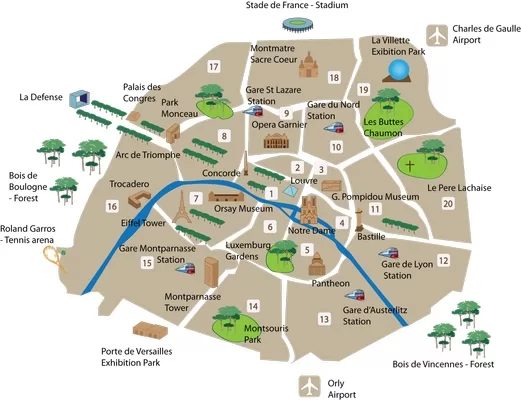
Keep in mind that, like any city, Paris has its own unique challenges and considerations for street photography. Always be respectful of people’s privacy and property, and be aware of any photography restrictions in certain areas.
Consider the time of day and lighting conditions, as they can greatly affect the quality of your street photographs. Overall, Paris offers a wealth of inspiration for street photographers of all levels.
Tripadvisor Top Travel Destination: Paris
Here’s a guide to what you can find in each of the Paris arrondissements:
1st Arrondissement (Louvre):
Located in the heart of Paris, it is home to many historic landmarks, including the Louvre Museum and the Palais Royal with its beautiful courtyard.
The Louvre Museum, holds thousands of works of art, including the Mona Lisa. The area around the Louvre is known for its grandeur and elegance. Museums in Paris are closed on Tuesdays and there are fewer tourists around.
Jardin des Tuileries, a stunning French formal garden. Place Vendôme is located to the north of the Tuileries Gardens and east of the church Église de la Madeleine (see the view of the church along Rue Royale from the Place de la Concorde).
La Samaritaine art nouveau department store opened in 1869. The interior view from the top floor shows off the elegant glass of the roof and wrought iron work of the stairs. The elevator has glorious views of the Senne.
Galerie Véro-Dodat, built in 1826, is a neo-classical covered passage between the Rue de Jean-Jacques Rousseau and Rue de Croix-des-Petits-Champs.
2nd Arrondissement (Bourse):
This arrondissement is known for its business district, with many offices and banks, plus the Bourse (Stock Market). The district also has a lively arts and shopping scene around the Grands Boulevards.
Passage des Panoramas, opened in 1800 is one of the oldest covered passages in Paris and is located between Montmartre Boulevard and Rue Saint-Marc. Galerie Vivienne, built in 1823, is a spectacular covered passage located between the Royal Palace and the Grands Boulevards. Sit a while at one of the cafes.
Passage du Grand-Cerf, between Rue Dussoubs and Rue Saint-Denis is home to boutiques of artisans, decorators, fashion, designers and communication professions. IDAIA is a French-Australian social enterprise dedicated to the promotion and support of contemporary Aboriginal artists.
Sentier, a historic textile district with charming streets is the place for designer luxury shopping and textile wholesalers.
Opéra Garnier, a magnificent opera house. Close by is Kimpton St Honoré Paris, an art deco five star hotel with stunning views from the roof and amazing art deco elevators.
3rd Arrondissement (Temple):
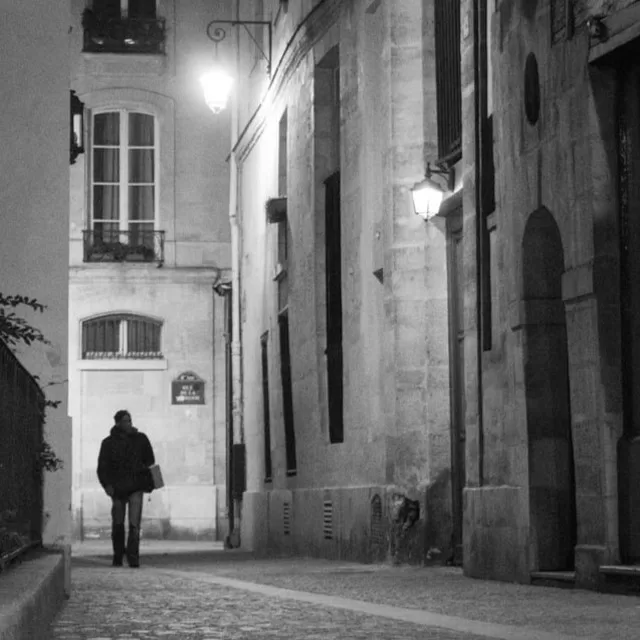

Le Marais, one of the trendiest neighborhoods in Paris, is located in this district. It’s known for its historic architecture, art galleries, and vibrant LGBTQ+ community. Le Marais district with its historic architecture and trendy boutiques is full of hip eclectic cafes, bars and is a museum art lovers paradise.
This was the home of the Knights Templar so the sleuth can retrace their steps, searching for the Holy Grail. Here’s a hint: any Parisian street or landmark with the words “du Temple” relate to the old Knights.
Musée Picasso, showcasing the works of the renowned artist.
Place des Vosges, a beautiful square lined with elegant townhouses was built in 1612. Jim Morrison spent his last day chatting with a friend in a cafe in this square. He lived nearby at 17 Rue Beautreillis.
Paris Sightseeing Tours with guided Paris CityVision
4th Arrondissement (Hôtel de Ville):
Home to the iconic Notre-Dame Cathedral on Île de la Cité and the charming Île Saint-Louis. Le Marais extends into this district, making it a popular spot for tourists.
Hôtel de Ville (City Hall) and its grand square.
5th Arrondissement (Panthéon):
Known as the Latin Quarter, it’s famous for its vibrant student life and historic universities, such as the Sorbonne. This is the mythical literary Paris, full of uni student dives, so this is the place to stay for old-world charm and to rub shoulders with brooding writers.
Shakespeare and Company is an old world bookstore visited by the likes of Ernest Hemingway, F. Scott Fitzgerald, James Joyce, Allen Ginsberg, and William S. Burroughs, is at 37 rue de la Bûcherie, and has a Wallace Fountain in front to add to the photograph. The bookstore was featured in Woody Allen’s Midnight in Paris.
The Panthéon, a neoclassical mausoleum and the Jardin des Plantes, a botanical garden and natural history museum are notable attractions in this area.
There are spectacular photos to be had under the Petit Pont bridge looking along the riverside of Seine river towards Cathedral of Notre Dame at night.
Rue Mouffetard is the oldest and one of the most picturesque streets in Paris and holds a daily street market, every day except Mondays. Marquis de Sade had a bachelor pad here until he was arrested in 1763. Victor Hugo mentions the barricades on Rue Mouffetard in “Les Misérables” in 1862.
6th Arrondissement (Luxembourg):
Located on the Left Bank of the River Seine, it is known for its intellectual and literary history. In the 19th and 20th centuries, the 6éme was a cheap area for artists, students and revolutionaries to live amid cafes and bookshops.
Galerie Roger-Viollet gallery and photo agency is at 6 rue de Seine.
The Luxembourg Gardens with beautiful fountains and statues and Saint-Germain-des-Prés, a historic and literary neighborhood are popular spots.
Rue de Nevers is one of the narrowest streets in Paris, and where the truck became wedged in the move Mission Impossible: Fallout. There is a great little Irish pub.
The Saint Michel metro station on Place de Saint Michel where it meets rue Saint André des Arts has a nice square and street art.
The 6éme arrondissement is the place to head to for the café culture:
Les Deux Magots at 6 Pl. Saint-Germain des Prés was a haunt of Simone de Beauvoir and Jean-Paul Sartre. The street old book stores are a writer’s dream.
Café de Flore, at 172 Bd Saint-Germain is directly across the street from Les Deux Magots.
Le Procope with a set lunch menu at around 20 euros at 13 rue de l’Ancienne Comédie is the oldest cafe (now a restaurant) in Paris, has hosted Voltaire, Benjamin Franklin, Thomas Jefferson, and has a hat that Napoleon left there as a pledge.
La Palette at 43 Rue de Seine is a cafe frequented by Picasso and the late Anthony Bourdain. It is expensive so stick to the espresso coffee.
Le Polidor on Rue Monsieur le Prince was the location in Woody Allen’s “Midnight in Paris” where the main character met Ernest Hemingway.
7th Arrondissement (Palais-Bourbon):
Home to the iconic Eiffel Tower and the Hôtel des Invalides, a military museum which houses Napoleon’s tomb.
It’s a mixture of high-end residential and tourist areas. Musée d’Orsay, showcasing Impressionist and Post-Impressionist art.
As well as the sculptures in the garden, Musée Rodin houses an important collection of 25,000 historic photographs.
The famous Lavirotte Building at 29 Avenue Rapp is one of the most photographed art nouveau buildings in Paris. The door and facade is one of the finest examples of Belle Époque in Europe.
The intricate wrought-iron balconies and decorative features of the Regency houses along Avenue Silvestre de Sacy provide a captivating foreground that enhances a classic Eiffel Tower photograph. Try the corner of Avenue de la Bourdonnais and Avenue Silvestre de Sacy.
8th Arrondissement (Élysée):
A high-end district known for luxury shopping and theaters along the Champs-Élysées. This district also has understated authentic Haussmann residential buildings.
Landmarks include the Arc de Triomphe, a monument honoring French soldiers and Place de la Concorde. Grand Palais and Petit Palais, both hosting art exhibitions.
Sunsets from on top of the Arc de Triomphe de l’Étoile are worth climbing the 300 steps.
The interior of Church of Sainte-Marie-Madeleine, L’église Sainte-Marie-Madeleine), or less formally, La Madeleine on Place de la Madeleine is worthy of a visit for its frescoes on the domed ceiling and monumental sculptures.
9th Arrondissement (Opéra):
A diverse area with a mix of businesses, theaters, and entertainment venues.
The Opéra Garnier and the Folies Bergère are found here.
Montmartre district, home to the iconic Sacré-Cœur Basilica. Pigalle, known for its nightlife and cabarets.
Galeries Lafayette Paris is a huge luxury art nouveau department store with a 40m high dome.
10th Arrondissement (Entrepôt):
Entrepôt is where I live in Paris, right between Marais, school in the 11eme and the parks Parc le Buttes & Belleville. Known for its bustling and vibrant street life, trendy cafes and boutiques. This district is the grungier Paris with an international vibe. The Chinese, Thai, Indian, and Algerian restaurants cater to locals, not tourists and are priced accordingly.


Canal Saint-Martin is a picturesque waterway with footbridges, canal boats navigating the locks and if you’re lucky, a swan or two. This is a popular neighborhood for young Parisians and you will find the sides of the canal adourned with people especially on the weekends. Head to Rue de Bichat for the street art.
Photographers could easily spend hours in La Republique with skate boarders willing to have their aerobatics captured. The Republique square is the meeting place for protestors and while many want their message to be publicised, it is highly advisable to leave the area if things get violent. The French police are known to use spray and batons, and even media photographers don’t get a free pass. This is the only place that I encountered pickpockets bumping into me, hoping to grab something and disappear into the crowd.
Gare du Nord, one of Paris’s major train stations. Porte Saint Dénis is one of the magnificent entrances to the old walled city of Paris.
There are two covered passages in the 10th arrondissement of Paris, the art deco Passage du Prado created in 1785 which connects Rue du Faubourg-Saint-Denis to Boulevard Saint-Denis, and Passage Brady which opened in 1828, located slightly further north on Rue du Faubourg-Saint-Denis.
11th Arrondissement (Popincourt):
Known for its nightlife and diverse dining options, 11eme is the new Marais, the hip yet secret creative hub. The Magnum Photos Gallery and Speos International Photography School, plus many other creative companies now call the 11th arrondissement home.
The Place de la Bastille is of historical significance and the trendy bars in Oberkampf Street are notable areas. It is worth sitting in Bastille Square and watching the skateboarders and scooters.
Père Lachaise Cemetery, final resting place of famous figures including Oscar Wilde, Jim Morrison, Edith Piaf. The grave of photographer Nadar is on my to do list next visit.
Atelier des Lumières (Workshop of Light) on Rue Saint Maur holds immersive exhibitions of video projection light shows. “The Egypt of the Pharaohs. From Khufu to Ramses II” in long program and “The Orientalists. Ingres, Delacroix, Gérôme” in short program run until 5 January 2025.
12th Arrondissement (Reuilly):
A mix of residential and green spaces, notably the beautiful Bois de Vincennes park and Parc de Bercy.
Promenade Plantée – An abandoned mid-19th century viaduct was converted into the world’s first elevated park walkway in 1993, offering pedestrians an elevated view over the Parisian facade along a 4.5km (3 mile) stroll from Opéra Bastille to Bois des Vincennes. Especially lovely in spring when the many plants are in bloom and Parisians come out of their winter hibernation.
Bois de Vincennes, a vast park with a lake and a zoo.
Bercy Village, a shopping and dining area.
Gare de Lyon, a major train station.
Rue Crémieux is a charming one-block pedestrian street initially constructed as housing for workers. Renowned for its picturesque painted housefronts, the street is frequently recommended to tourists seeking a delightful stroll. Moreover, Rue Crémieux has emerged as a sought-after location for film shoots and a popular backdrop for social media photography.
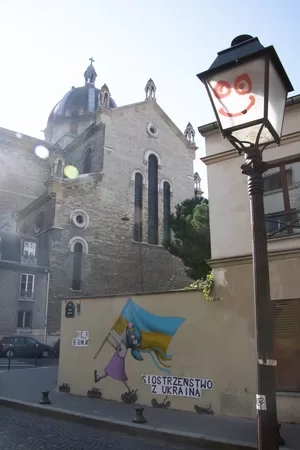

13th Arrondissement (Gobelins):
Known for its modern architecture, this is a less touristy district with a diverse population.
Chinatown with vibrant Asian restaurants and shops.
Bibliothèque Nationale de France (BnF), a modern library with two site, the Bibliothèque François-Mitterrand and the Richelieu.
Butte-aux-Cailles, a charming neighborhood with narrow streets and incredible street art of which the locals are proud.
14th Arrondissement (Observatoire):
The 14éme arr. is a more residential area with a relaxed atmosphere, and the Montsouris Park (Parc Montsouris) is a lovely park with a lake.
Catacombs of Paris, an underground ossuary.
15th Arrondissement (Vaugirard):
The largest and most populous arrondissement in Paris, this is home to the Eiffel Tower‘s southwest side and many residential areas.
Parc André Citroën, a modern park with hot air balloon rides.
Montparnasse Tower (Tour Montparnasse) is another skyscraper with panoramic views of Paris, both day and night. The Montparnasse Tower Observation Deck is in the 15th arrondissement near the boundaries of the 14th and 6th arrondissements, with tickets and information here.
Convention Center Porte de Versailles.
16th Arrondissement (Passy):
Known for its upscale residential neighborhoods and the Bois de Boulogne, a large park with lakes and gardens..
The Trocadéro Gardens offers stunning views of the Eiffel Tower.
5 minutes walk away from Trocadéro is another classic view of the Eiffel Tower, at Avenue de Camöens. Walk down the stairs for a beautiful statue in honor of the Portuguese poet Luís de Camões.
Palais de Tokyo, a contemporary art museum.
17th Arrondissement (Batignolles-Monceau):
A mix of residential and commercial areas with fewer tourist attractions.
Parc Monceau is a beautiful park in this district with statues and a pond.
Batignolles district, known for its village-like atmosphere.
Palais des Congrès, a convention center.
18th Arrondissement (Butte-Montmartre):
Famous for Montmartre, a historic artistic neighborhood with the Sacré-Cœur Basilica. A vibrant and diverse district with a mix of tourists and locals. The Montmartre Grape Harvest Festival is in October.
Sacré-Cœur Basilica atop Montmartre Hill. It is worth climbing the 300 steps to the top of the Sacré-Coeur.
Moulin Rouge cabaret in Pigalle – information here. Another windmill/restaurant is Le Moulin de la Galette at 83 rue Lepic.
Square Coulaincourt has 112 steps if you’re feeling fit (Escalier Square Caulaincourt in French). rue Foyatier also has impressive stairs with a café at the bottom of the stairs, especially lit up in the evening.
19th Arrondissement (Buttes-Chaumont):
A residential area with cultural attractions, known for the Parc des Buttes-Chaumont, a hilly park with a suspension bridge, and the Cité des Sciences et de l’Industrie, a science museum.
La Villette, a cultural complex with theaters and a music hall.
20th Arrondissement (Ménilmontant):
The Ménilmontant district is known for its artistic community with a mix of cultures and neighborhoods.
Père Lachaise Cemetery, where many famous figures are buried, is located here.
Parc de Belleville has panoramic views extending to the Eiffel Tower 4kms away.
On Rue De La Ferme Savy, you’ll find the murals dedicated to the 150th anniversary of the Paris Commune uprising, painted by Qmrk.
Remember that while these are general descriptions of each arrondissement, Paris is a city of surprises, so be sure to explore beyond the major attractions to discover its hidden gems and local charm. Enjoy your trip to the City of Light!
Don’t forget the many delights just outside the city: Palace of Versailles, Château de Vincennes and more.
I was lucky enough to spend a year in Paris studying documentary photography at the famed Magnum Photos and Speos International Photography School in 2021-2022, so I witnessed this stunningly beautiful city in all its seasons. I will be returning to Paris in 2024-2025 and this page is my to do list
Paris Sightseeing Tours with Paris CityVision
Related stories
Notre Dame de Paris: A Tale of Resilience and Restoration
Speos Magnum documentary & AFP photojournalism courses
Covid anti-vaccine pass sanitaire Paris protest
French wine lovers love Montmartre Grape Harvest Festival
Paris Flower Market, Marché aux Fleurs – Reine Elizabeth II
Parisian Street Art in Support of Ukraine


